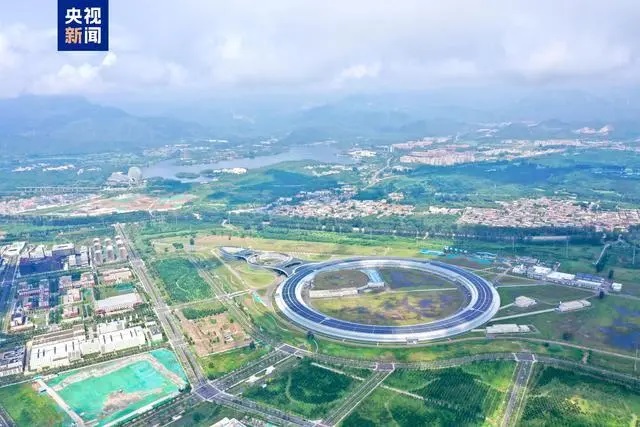Breakthrough made in ultrabright X-rays
China Daily, August 21, 2024 Adjust font size:

China has achieved a significant scientific milestone with the successful storage of high-energy electron beams in the High Energy Photon Source storage ring. The breakthrough, achieved on Sunday, has further advanced efforts to improve the brightness of X-rays.
The High Energy Photon Source, a major national scientific infrastructure project, is under construction at Huairou Science City in Beijing and is expected to be fully operational by the end of next year.
Once completed, it will be China's first high-energy light source and one of the brightest fourth-generation synchrotron radiation facilities in the world, emitting light 1 trillion times brighter than the sun, according to the Institute of High Energy Physics, which is part of the Chinese Academy of Sciences.
The ultrabright light produced by the photon source will address urgent needs for ultrabright, high-energy X-rays in cutting-edge research across various fields, including aerospace, energy, environmental and life sciences, the institute said.
According to Pan Weimin, the project director, the commissioning of the storage ring commenced on July 23 following the fabrication, installation and joint conditioning of all its equipment.
"During the initial beam commissioning phase, the storage ring comprises 1,776 magnets, over 2,500 power supply devices, 578 electron beam position monitors, 1,360 meters of vacuum chambers, and more than 100,000 control signals," Pan said. "Any minor hardware issue, such as an obstruction or misalignment of equipment, can impact the electron beam's trajectory."
Pan also highlighted the unique challenges posed by the photon source, including two slicing magnets for injection and extraction, with a vertical physical aperture of only 2 to 3 millimeters. "This undoubtedly presents a significant challenge for beam commissioning," he said.
The team of scientists has been working continuously on the commissioning process, operating 24 hours a day with only brief interruptions for hardware fixes. On Sunday, they achieved an electron beam with the current of 12 milliamperes, a hundredfold increase from the levels reached just a week earlier.
Jiao Yi, deputy head of the High Energy Photon Source accelerator division, said commissioning will continue over the next few months, aiming for higher beam currents with sufficiently long beam lifetimes to support vacuum conditioning and beam line commissioning.
Pan said the ultimate goal is to reach 200mA.